ORIENTIN
Synonym(s):8-β-D -Glucopyranosyl-3′,4′,5,7-tetrahydroxyflavone;Luteolin 8-C-β-D -glucopyranoside;Luteolin-8-glucoside;Lutexin
- CAS NO.:28608-75-5
- Empirical Formula: C21H20O11
- Molecular Weight: 448.38
- MDL number: MFCD00017432
- SAFETY DATA SHEET (SDS)
- Update Date: 2025-10-29 15:43:00
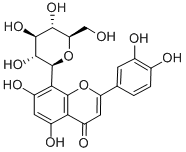
What is ORIENTIN?
Description
Orientin is a flavone glycoside originally isolated from P. orientale that has diverse biological activities, including antioxidant, antibacterial, and anti-inflammatory properties. Orientin scavenges 2,2-diphenyl-1-picryl-hydrazyl (DPPH; ) radicals with an IC50 value of 316.21 μg/ml. It also decreases the cytopathic effects of parainfluenza type 3 virus with an IC50 value of 11.7 μg/ml and a cytotoxic concentration (CC50) value of 375 μg/ml in Hep-2 cells. Orientin (5-40 μM) inhibits LPS-induced barrier disruption, decreases the expression of toll-like receptor 4 (TLR4), phosphorylated p38, and NF-κB, and decreases TNF-α production and IL-6 secretion in a dose-dependent manner in human umbilical vein endothelial cells (HUVECs). It also prolongs survival in a mouse model of LPS-induced lethal endotoxemia when administered at a dose of 36 μg/animal 12 hours after LPS administration.
Chemical properties
Yellow powder
The Uses of ORIENTIN
Orientin is a flavone, a chemical flavonoid compound. Orientin have been investigated for its anti-oxidant, antihypertensive and antihyperlipidemic effects.
What are the applications of Application
Orientin is a flavone
Definition
ChEBI: A C-glycosyl compound that is luteolin substituted by a beta-D-glucopyranosyl moiety at position 8.
Properties of ORIENTIN
| Melting point: | 260-285°C |
| Boiling point: | 816.1±65.0 °C(Predicted) |
| Density | 1.759±0.06 g/cm3(Predicted) |
| storage temp. | 2-8°C(protect from light) |
| solubility | 1 M NaOH: soluble1mg/mL, clear, yellow-orange |
| form | powder |
| pka | 6.24±0.40(Predicted) |
| color | yellow |
| Stability: | Hygroscopic |
Safety information for ORIENTIN
| Signal word | Warning |
| Pictogram(s) |
 Exclamation Mark Irritant GHS07 |
| GHS Hazard Statements |
H302:Acute toxicity,oral H315:Skin corrosion/irritation H319:Serious eye damage/eye irritation H335:Specific target organ toxicity, single exposure;Respiratory tract irritation |
| Precautionary Statement Codes |
P261:Avoid breathing dust/fume/gas/mist/vapours/spray. P280:Wear protective gloves/protective clothing/eye protection/face protection. P301+P312:IF SWALLOWED: call a POISON CENTER or doctor/physician IF you feel unwell. P302+P352:IF ON SKIN: wash with plenty of soap and water. P305+P351+P338:IF IN EYES: Rinse cautiously with water for several minutes. Remove contact lenses, if present and easy to do. Continuerinsing. |
Computed Descriptors for ORIENTIN
New Products
4,4-Difluoropiperidine hydrochloride tert-butyl 9-methoxy-3-azaspiro[5.5]undecane-3-carboxylate Indole Methyl Resin N-Isopropylurea N,N-Dicyclohexylcarbodiimide(DCC) MELDRUMS ACID 5-METHYLISOXAZOLE-4-CARBOXYLIC ACID Magnessium Bis glycinate Zinc ascorbate 1-bromo-2-butyne 2-acetamidophenol 9(10H)-anthracenone Erythrosin B, 4-Piperidinopiperidine 2-((4-morpholinophenylamino) (methylthio) methylene) malononitrile 2,4-dihydroxybenzaldehyde 3-(4-morpholinophenylamino)-5-amino-1H-pyrazole-4-carbonitrile Methyl 2-methylquinoline-6-carboxylate 2,6-dichloro-4-nitropyridine 4-Bromo-2-chlorobenzonitrile 2-(benzylamino)acetic acid hydrochloride 4-(tert-Butoxycarbonylamino)but- 2-ynoic acid 3,4-dihydro-2H-benzo[b][1,4]dioxepine 1-Phenyl-1-cycloprppanecarboxylicacidRelated products of tetrahydrofuran

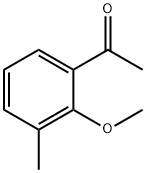
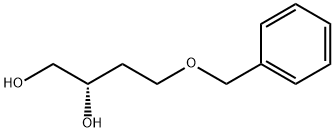

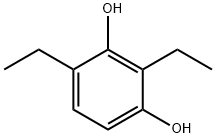
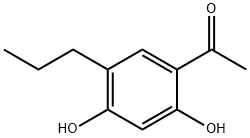

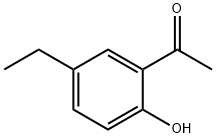
You may like
-
 Orientin CAS 28608-75-5View Details
Orientin CAS 28608-75-5View Details
28608-75-5 -
 3-(4-amino-1-oxoisoindolin-2-yl)-1-methylpiperidine-2,6-dione 98%View Details
3-(4-amino-1-oxoisoindolin-2-yl)-1-methylpiperidine-2,6-dione 98%View Details -
 614-19-7 98%View Details
614-19-7 98%View Details
614-19-7 -
 3112-85-4 Methyl phenyl sulfone 98%View Details
3112-85-4 Methyl phenyl sulfone 98%View Details
3112-85-4 -
 20677-73-0 (2,2-diethoxyethyl)methylamine 98%View Details
20677-73-0 (2,2-diethoxyethyl)methylamine 98%View Details
20677-73-0 -
 3-(4-(hydroxyamino)-1-oxoisoindolin-2-yl)piperidine-2,6-dione 98%View Details
3-(4-(hydroxyamino)-1-oxoisoindolin-2-yl)piperidine-2,6-dione 98%View Details -
 57381-49-4 2-bromo-4-chlorobenzonitrile 98%View Details
57381-49-4 2-bromo-4-chlorobenzonitrile 98%View Details
57381-49-4 -
 4,6-dichloropyrimidine-5-carbaldehyde 98%View Details
4,6-dichloropyrimidine-5-carbaldehyde 98%View Details
5305-40-8
